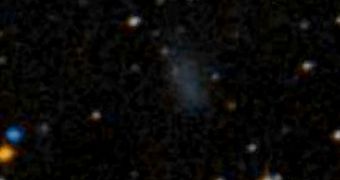Astronomers with the European Space Observatory (ESO) have recently identified a dwarf galaxy that lies within one of the massive voids that forms between large-scale structures in the Universe.
At the macroscale, the Cosmos is very different than astronomers took it to be in theoretical research. Galaxies have a tendency to clump together in clusters and superclusters, agglomerations oftentimes featuring thousands of such formations.
At the same time, this tendency to clump is causing huge swaths of space to remain entirely void. Between clusters and superclusters, no discernible structure can be observed breaking the darkness.
But experts had hypothesized that it's possible for some galaxies to exist in these void, cast out from clusters or similar structures, and living their lives in complete solitude. The ESO team recently managed to identify such an object.
For a long time, experts said that our only Milky Way was very close to the Local Void. However, more refined studies subsequently showed that we are near the edge of the nearest void, but still inside a cluster called the Local Group.
But dwarf galaxy ESO 461-36 was now located inside the void. To prove the discovery, experts say that the object has no other neighbors for 75 million light-years in any direction. The Local Void is estimated to be about 200 million light-years across.
Interestingly, the researchers identified a 55° inclination in the galactic disk surrounding ESO 461-36. This tilt may have been caused by two primary mechanisms, the team explains.
First, it could be that the galaxy has a bar structure at its core, which is contributing to funneling gas into the disk. If this process takes place, then it would explain the significant inclination.
The other explanation is that the galaxy has just emerged from a small-scale merger with a similar dwarf galaxy. The tidal interactions that occur during such events are sufficiently strong to alter the tilt of entire galactic disks, Universe Today reports.
ESO 461-36 is also one of the dimmest galaxies ever discovered, with a mass-to-light ratio of 89. Generally, dwarf galaxies have a brightness ratio of 20 to 40. Large galaxies such as our own have a ratio of 2 to 10, which makes them tremendously bright.
Encouraged by these findings, experts are now gearing up to search other galaxies in the void space between clusters and superclusters.

 14 DAY TRIAL //
14 DAY TRIAL //